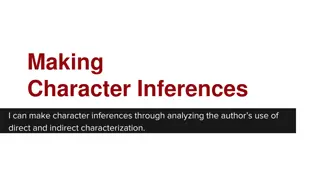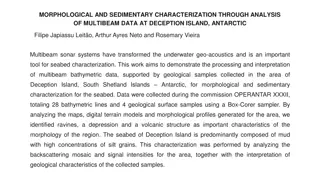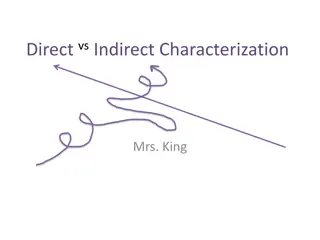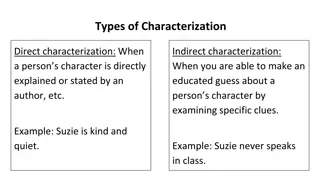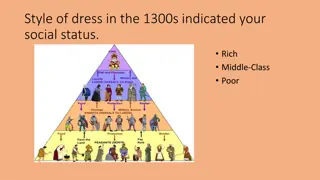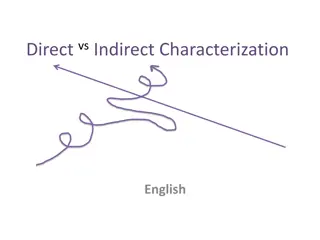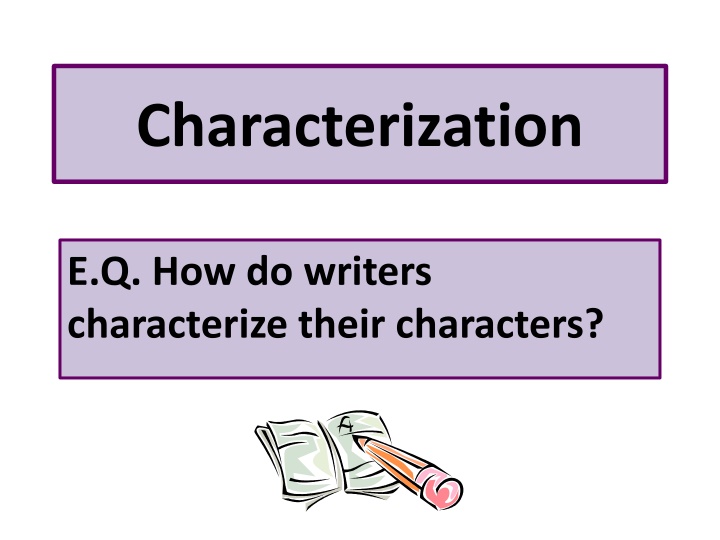
Characterization in Writing: Revealing Character Personalities
Explore how writers characterize their characters through direct and indirect methods in storytelling. Direct characterization explicitly describes character traits, while indirect characterization reveals personalities through thoughts, words, feelings, choices, and actions.
Download Presentation

Please find below an Image/Link to download the presentation.
The content on the website is provided AS IS for your information and personal use only. It may not be sold, licensed, or shared on other websites without obtaining consent from the author. If you encounter any issues during the download, it is possible that the publisher has removed the file from their server.
You are allowed to download the files provided on this website for personal or commercial use, subject to the condition that they are used lawfully. All files are the property of their respective owners.
The content on the website is provided AS IS for your information and personal use only. It may not be sold, licensed, or shared on other websites without obtaining consent from the author.
E N D
Presentation Transcript
Characterization E.Q. How do writers characterize their characters?
What is characterization? Characterization is the process by which the writer reveals the personality of a character. Characterization is revealed through direct characterization and indirect characterization.
Direct Characterization Direct characterization tells the audience what the personality of the character is. Example: The patient boy and quiet girl were both well mannered and did not disobey their mother. Explanation: The author is directly telling the audience the personality of these two children. The boy is patient and the girl is quiet. Straight forward
Indirect Characterization Indirect Characterization shows things that reveal the personality of a character. Writers use five different methods of indirect characterization: thoughts, words, feelings, choices, and actions.
Thoughts An author allows the reader to become better acquainted with a character by getting inside the head of that character. For example, in the story, The Secret Life of Walter Mitty, by James Thurber, the reader experiences the daydreams of the main character.
Words Authors typically give their characters unique voices. That is, the way in which a character talks is unique to that character. The reader doesn t have to question who is speaking because of the author s word choice, syntax, tone, and diction.
Feelings A writer allows the reader to know the heart of a character through the expression of his feelings. For example, in the story, The Great Rat Hunt, by Laurence Yep, the reader comes to understand that, as a boy, Laurence felt incompetent when it came to playing sports.
Choices Very often, an author will characterize a character based an incident in the character s life, how the incident shapes them as a character, and the choices the character makes in dealing with the incident. For example, in the story, Charles, by Shirley Jackson, the main character makes certain choices that give the reader keen insight into the personality of that character.
Actions A character can be analyzed by an action he or she takes when confronted with a certain situation. For example, when Tom Sawyer is given the job of whitewashing a fence (a job about which he is less than enthused), he doesn t sit around griping and complaining about it. Instead, he puts a plan into action that benefits all parties concerned.
To Sum it All Up A writer reveals the personality of a character through direct and indirect characterization. Authors include more in-depth characterizations to give readers a greater understanding of, and personal connection with, the characters in their stories.




